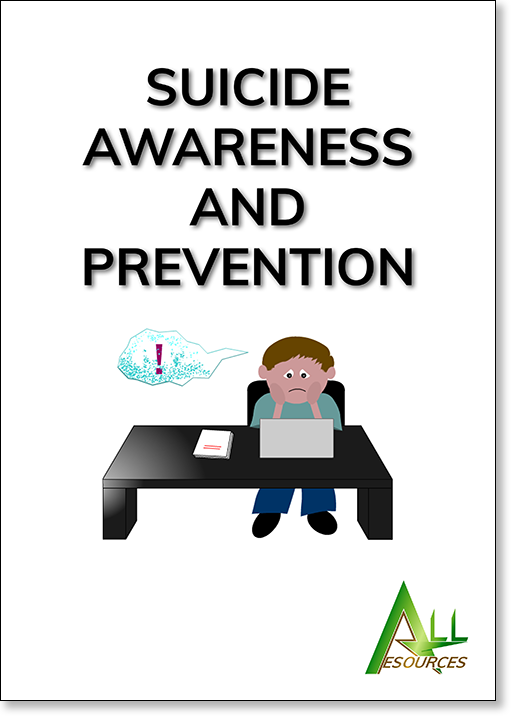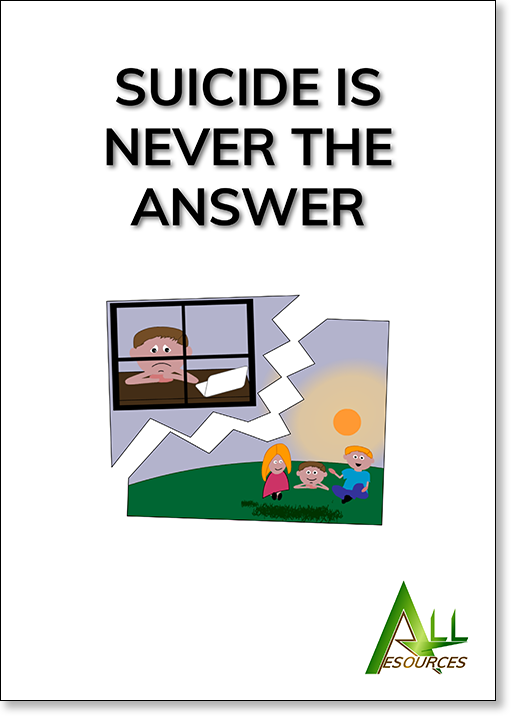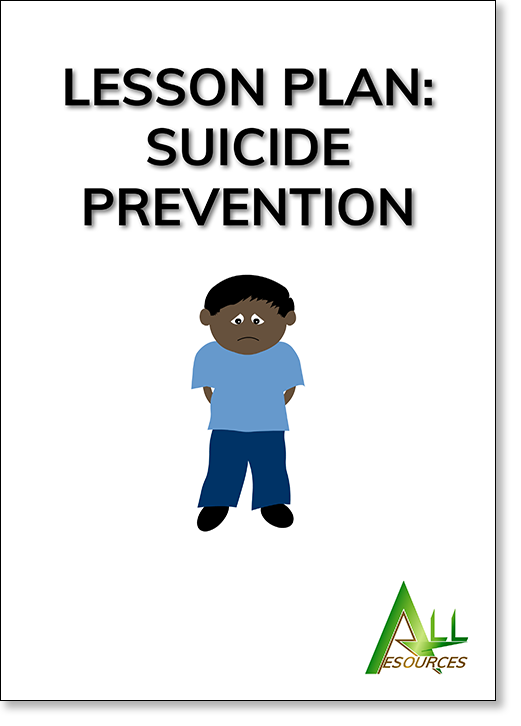Suicide
Suicide is one of the most traumatic events and one person dies every 40 seconds by suicide. It is vital that schools, youth centres, businesses and other organisations can access resources for suicide if they are to tackle the root causes of suicidal ideation.

Suicide Awareness and Prevention
Covers suicide from a variety of perspectives, the reasons behind suicide, the groups most at risk and the warning signs.
- Focus: For those interested in suicide prevention and mental health policy
- Category: General
- First published: 2022
- Pages: 61
- Illustrated throughout
Hard copy: £35.99 add to basket

Suicide is Never the Answer
Understand the reasons behind suicidal feelings in young people and recognise the signs to help prevent this tragedy.
- Age range: 12 years and upwards
- Category: Schools
- Last revised: 2022
- Pages: 44
- Illustrated throughout
Hard copy: £25.99 add to basket
Suicide Lesson Plans

Suicide Prevention
A lesson plan designed to promote suicide awareness and prevention.
- Age range: 12 years and upwards
- Category: Lesson plan
- First published: 2022
- Pages: 21
- Duration: 55 mins – 1 hour
Hard copy: £10.99 add to basket
What is Suicide?
Suicide is the act of taking one’s life voluntarily. It is contrary to the normal human desire for self-preservation.
Worldwide, approximately 1 million people die by suicide each year and it is among the three leading causes of death among males and females aged 15 – 44 years.
More investment and support is needed in mental health including suicide awareness and suicide prevention.
Suicide Awareness
Suicide awareness is a key step in preventing suicide. It is a way of identifying and responding to people who are at risk of suicide as well as other self-destructive behaviours. In addition to gaining knowledge and understanding of this often taboo mental health condition, suicide awareness is a way of shifting public perception through education and training.
Our resource pack Suicide is Never the Answer provides support and information on depression and suicide.
Suicidal Ideation
Suicidal ideation simply means suicidal thoughts — in other words someone is starting to consider suicide as a way out of their current situation. Most people who have suicidal thoughts do not actually attempt suicide. However, if someone has made a suicide attempt in the past, they are significantly more likely to eventually die by suicide than the rest of the population. There are some signs that may indicate someone is considering suicide including:
- Spending long periods in isolation — not wanting to mix with family or friends.
- Acting out of character — unusually aggressive or angry.
- Extreme mood swings.
- Putting affairs in order or making a will.
- Giving away personal belongings.
- A fixation with films or songs with violent or morbid content and lyrics.
- A significant lack of interest in things they once enjoyed.
- Talking about suicide — e.g. “I won’t be here much longer”; “You would all be better off without me”; “I bet you will be glad when I’m gone” etc.
If you notice a loved one exhibiting any of the above signs, it may indicate there is a problem. Talk to them, reassure them and make sure they get the help they need.
Suicide Prevention
Many suicidal people suffer from mental health problems such as depression, although not all depressed people have contemplated suicide or feel suicidal. World Suicide Prevention Day is a time for us all to focus on preventing suicide and to reassure those who are feeling suicidal. WSPD is observed every September and is a time to raise awareness of suicide.
All Resources has produced a number of resources for suicide prevention which cover aspects of mental health with the aim of preventing suicide. They provide information on the potential warning signs that someone is in emotional distress and advice on how to tackle these issues.
Education and training is key in preventing suicide and self-harm. There are a number of suicide prevention resources on the market which contain toolkits, fact sheets and other information. There are also more comprehensive suicide prevention programmes and other resources and they provide evidence that suicide is preventable.
Risk Factors for Suicide
There are some risk factors for suicide and they include:
- Mental disorders such as depression, drug abuse, schizophrenia, antisocial personality disorders, and anxiety disorders.
- A previous suicide attempt increases the likelihood of further suicide attempts.
- A family history of attempted or completed suicide.
- Serious medical conditions, severe pain, cancer, AIDS or other terminal illnesses.
- Certain stressful life events such as losing someone close, relationship breakups, child/parental separation.
- Stress over a long period due to long-term events such as unemployment, serious relationship problems, bullying, another person’s suicide, parental illness or death etc.



